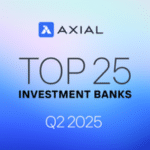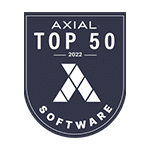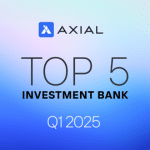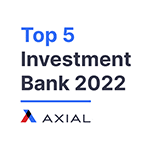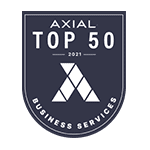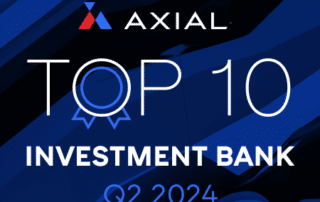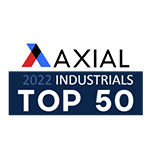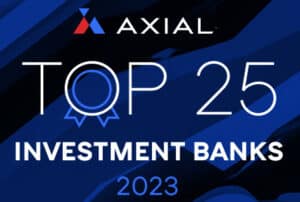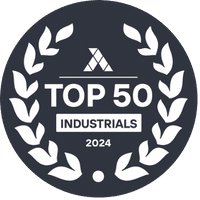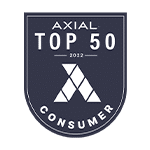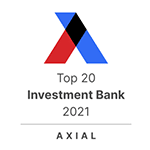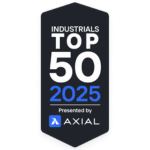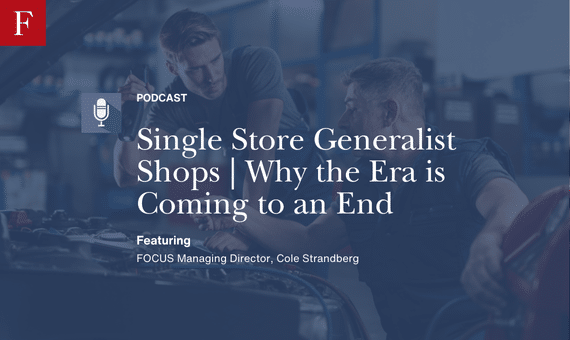
Single Store Generalist Shops | Why the Era is Coming to an End with Cole Strandberg
What is your team really good at fixing? If you double down on specializing in what you know and what you do well and what is commonplace in your market, you’re going to increase efficiency. You’re going to create a reputation for excellence in that niche. You’re going to be able to bring more services in house.
And in a lot of cases, these are very profitable services, but that specialization is going to lead to massive efficiencies throughout your organization. Welcome to another episode and another season here on the Collision Vision. I hope 2024 treated you and yours incredibly well, and I’m looking forward to an even better year in 2025. I really think it’s going to be a great one.
The focus of the collision vision in 2025 is to double down on the most important and timely topics in the collision repair business and to triple or even quadruple down on offering actionable insights for your business. Let’s get to it. The era of the single store generalist Body Shop is coming to an end. How does that sentence make you feel?
Angry, Scared. Defensive. Spoiler alert. I think it should excite you.
The era of the single store generalist Body Shop is coming to an end is the subject of this month’s series, and it’s based on a presentation I’ve been giving at SEEMA Association events and beyond. This hot take of mine comes from hundreds of episodes of the Collision vision and meeting with some of the highest levels of industry thought leaders. It’s something I believe in being true. In this series, we’ll tell you why I think this is the case, as well as what to do about it to not only survive in the future of collusion repair, but to thrive.
To kick off the series, our guest today is Me and Only Me. I’ll be giving an overview episode today that closely resembles the presentation I’ve been giving in person across the country, though this time in podcast form. Following today’s episode, each episode this month will focus on one of three exciting paths forward for body shops that I’ll touch on briefly today, and those are specialized scale and sell. Enjoy the show.
Well, happy New Year, everyone. I hope the holiday season was fantastic and I hope you’re looking forward to an incredible 2025. I’m sitting here at the time of this recording in the North Georgia mountains, spending the holidays with my in laws and reflecting on what a great year 2024 was and how much I’m looking forward to 2025. I think it’s going to be an incredible 1.
Want to start off the new year strong with our series talking about the end of the era of the single store generalist Body Shop, which feels kind of negative but it’s not. I promise it has a happy ending of a story. This is based on a presentation that I’ve been giving across the country in 2024 and will continue into 2025 at different events like SCRS at Seema AASPI coming up in February. Really good stuff and I think it’s timely information and I want to set the groundwork and take a high level view of the topic before we get into the nitty gritty in the following three episodes where we’re going to focus on the three paths forward for body shops to not only survive the future of the collision repair industry, but to thrive in it as well.
With that, we’re also coming up on the two year anniversary of the Collision Vision, which is so exciting. It’s tough to believe it’s flown by so quickly and we’ve gotten to know each other pretty well here over the past, I don’t know, 100 something episodes, which is also hard to believe. But to set the stage for this episode, I’m going to give a more formal introduction than maybe I have in the past. I grew up around the collision repair industry.
My parents started a collision repair equipment company back in 1988, ended up not joining the family business right out of school, but went the investment banking route and sometime into that the family business came calling. And when the family business comes calling, you typically answer. I worked with the family business under the family’s ownership for three years and then with the private equity group who acquired and partnered with the family business as a platform for another three years. About 3 years ago, I joined the team at Focus Investment Banking, where I spend my time on mergers and acquisitions and capital raising within the collision repair industry.
So it’s an industry I love. I’ve grown up around it, but it’s really been over the past maybe 5 or 6 years that I’ve realized my passion for the industry. With that comes some exciting things. The genesis of this presentation actually comes from SEMA 2023, where I had the good fortune to speak on a panel about consolidation with some of the other deal makers in the collision repair space.
It was an hour long panel. It was hosted by Frank Turlop, a good friend of the show who most of you guys know. And at the end of this hour long panel, I think we’re all sitting up there thinking, man, this went pretty good. This is good stuff.
That was fun. We did what we needed to do. I think we provided some good insights for folks. And then the time for Q&A came and we had a couple questions, some softballs, and then Mike Anderson gets up and walks to the front of the room.
And for anyone who knows Mike, which is likely everyone here listening to this show today, the gravity that that man carries in a room is crazy. And so we’re all waiting and curious to see what kind of question he might throw at us. And he hits us with something along the lines of, guys, we just spent an hour talking about how to sell. We didn’t even touch on helping shops buy and grow and emulating some of those tactics that the big guys use to improve their own business.
And at the time I was like, man, we sort of talked about it, but all good. In hindsight though, I realized he was 100% right. We have some incredible high growth, massive organizations in our industry, but we also have some smaller fast growing ones as well. And I think to educate on some of the tactics that the big national consolidators use is smart and timely.
And I think some great stuff as we go into 2025. S going back to my controversial take, which I’m not a very controversial person. It’s not good for business. It’s not who I am, it’s not my personality.
But here it is. The era of the single store generalist Body Shop is coming to an end. Now why might I say that? I think it’s a lot of reasons that you guys know and would agree with and deal with every single day.
We have increasing vehicle complexity, the training required now, the equipment required to be properly certified in repairing these vehicles and to complete these repairs in a safe and proper way. It’s more challenging and more expensive than ever. The technician shortage, of course, is something that comes up all the time. And interestingly enough, there’s a unique bell curve, I think when it comes to hiring your single store generalist.
Independent shops are having a hard time, as are your large national consolidators. But there’s a sweet spot that I’m seeing in the middle there and we’ll talk about that as a benefit to scale. There’s also continued insurance challenges and a whole lot more. This is a tough business.
It’s a fantastic business, but there is no shortage of headwinds that try to counteract the incredible tailwinds. But this era coming to an end is not a bad thing. I think it represents some incredibly unique opportunities. I’ve seen it time and time again across my career.
Challenges create opportunities almost without fail. It might be a real short term hindrance, but the opportunities and the doors that these challenges open are going to make for a very exciting future. So it is my opinion and an opinion that I’ve really, it’s evolved because of the collision vision and speaking with some of the best and brightest operators in the industry. And that is that we have 3 viable paths forward.
If you’re sitting here and listening as a single store generalist Body Shop, and those are specialized, scale and sell. Now I’ll touch on each a little bit deeper here today, but keep in mind as well, we’re going to have a dedicated episode for each of these tactics here for the rest of the month. So continue to tune in throughout the month. So let’s start with specialize.
Why would we specialize? What do I mean when I say specialize? We’ve heard it time and time again from O ES, from operators that the time in this industry has come where we are not going to be all things to all people. What are some of the options?
When I say it’s specialized, it can be immediately what comes to mind, Exotic or luxury, It could be a truck, could be anything along those lines. What are the the major things that pop out? European, Japanese. It could also be a little simpler than that.
What do you guys get the most of? What is your team really good at fixing? If you double down on specializing in what you know and what you do well and what is commonplace in your market, you’re going to increase efficiency. You’re going to create a reputation for excellence in that niche.
You’re going to be able to bring more services in house, and in a lot of cases, these are very profitable services, but that specialization is going to lead to massive efficiencies throughout your organization. Certainly at the parts and procurement portion of your business, in your marketing, you’re going to be able to really dive in to a specific subset of general collision repair customers. And your team of technicians is going to understand these vehicles and get to know them like the back of their hands and increase that efficiency that leads toward that NASCAR pit crew effect among your technician base. All of this combines to lead toward perhaps the biggest benefit of specialization or maybe the second biggest benefit behind proper and safe repairs and that is increased profitability.
Average DRP type generalist shops are going to be netting in that 10:00-ish percent profit range or EBITDA range. The shops that I see who have specialized, whether it’s EVs, exotics, trucks or you know, Asians, Europeans, more less specific, I guess more general, but still specialized. On average, I’m seeing these shops are 50 to 100% more profitable than their generalist counterparts. I want to say that again, 50 to 100% more profitable just by specializing on what they’re good at doing.
Now this might be a little bit skewed again going back to that, bringing services that might otherwise be outsourced in house, high margin services like ADOS, calibration, things like that. You want to be careful in general with specializing. The more specialized you get historically, the more limited your eventual acquirer. And we’ll talk about this when it comes time to the cell portion of the conversation.
That becomes more limited, but that’s changing now. We’re seeing groups who focus on specialized body shops popping up and growing left and right. A couple that come to mind are some national consolidator, specialized high end or luxury shops. You also have groups like Quality Collision where that is their thing and they’re making a big splash in a big way in that world.
So you are not limiting yourself by specializing, by increasing profitability. There are very few negative effects once you get that critical mass, once you invest in those OEM certifications, once you get comfortable turning down work that you would have formerly taken and staying focused on what you’re specializing in and what you’re best at. Our industry today is in a situation not dissimilar to David versus Goliath. There are multiple Goliaths out here, and all of us Davids were essentially competing with them day in and day out.
As we know, David can beat Goliath, but he’s probably not going to do it when he’s fighting the battle the same way. So let’s figure out how we’re different. Let’s figure out how we can be the best we can be and fight that battle in a different way. And that that different way very well could be specialization.
Now in our episode about specialization, we’re going to dive a little bit deeper into how to choose that specialization. How do you determine what your market needs and wants from a specialization standpoint? I think this is all important. There’s no sweeping generalizations that I can share on on how to pick a specialization because it is going to depend on you, your team’s skill set and on the market, how many vehicles of what kind are out there.
And so we’ll talk about that a little later on this month. I want to pivot now to scale, and this is one we’re going to spend a fair bit of time on. I think scale is misunderstood in the collision repair industry, specifically by smaller operators. The big guys understand the magic of scale, and that’s why they’re doing it.
The misconception is rooted in a math equation, probably the very first math equation we ever learned, that 1 + 1 = 2. And in the case of Body Shop growth or mergers and acquisitions or scale or consolidation, however we want to address it, the magic comes in something called multiple arbitrage, where 1 + 1 = 3 or more. And I want to give an example of what exactly that looks like, because that sounds, I get it, like I’m doing math poorly. This is total BS.
But again, 1 + 1 = 3 or more. And I want to give an example. Say we have a single store shop, good operation. They’re doing $3,000,000 in sales at a 10% EBITDA profitability margin.
Say they are approached by a national consolidator and they are given a offer to purchase at 50% of revenue or $1.5 million, so 50% of revenue or five times EBITDA or profit. Now say we’re in good fortune here for this example because there is only one Pureplay Collision Group that is publicly traded and we know them as the Boy Group or Gerber Collision and Glass. Because they’re publicly traded, we get access to their financials and see how they do quarter in and quarter out and annually for 2023. I’m going to throw some old numbers because we have not had a chance to get 2024 numbers.
By the time of this recording for 2023, sales for Gerber were $2.9 billion. Their Adjusted EBITDA was $368.2 million for a 12 1/2 percent EBITDA margin, so just right there above the average for a generalist from profitability. You can see how they’ve been able to get some efficiencies via scale. At the time that I pulled their market cap, their total value on the public markets back in the summer, Gerber or the Boyd Group was worth $5.6 billion.
It’s a big company. That valuation depending on how you look at it, boils down to 193% of sales or about 15 times EBITDA. So going back to that acquisition, say it’s Gerber pulling the trigger on this $3,000,000 in sales store doing 10% margin and they buy it for $1.5 million, five times EBITDA or 50% of revenue in an efficient market. And in theory, as soon as that acquisition becomes a part of Gerber, they have gone from a 50% of revenue valuation to a 193% of revenue valuation about four times or from a five times EBITDA multiple to a 15 times EBITDA multiple, about three times.
So as soon as this acquisition got implemented, not only is it adding that revenue in that EBITDA, the value of that acquisition has tripled to quadrupled. Now that’s a pretty quick and dirty explanation of multiple arbitrage, but it’s something that as you wonder man, how are these consolidators paying revenue multiples or or EBITDA multiples that I’m hearing about for shops like whatever they just bought. And the answer is multiple arbitrage. They realize that 1 + 1 equals 345610, whatever it is, but it doesn’t equal 2.
And that’s the value there of scale. And it’s something that is equally impactful on the single to two store or two to three or five to 10 on the small scale scale, that multiple arbitrage is still just as impactful. Now, there’s other benefits to scale as well, and it’s in part why scaled companies are worth more than smaller companies. A positive side effect is you work yourself out of a job with scale.
It necessitates working more on the business rather than in the business, leading strategically, plugging in layers of management, allowing you kind of, weirdly enough, a little more freedom with your time as you grow. It also offers, as I touched on a little bit earlier, the increased ability to hire top talent. And I’ll dive a little bit deeper into my theory there. With the struggles of single store operators in hiring good talent and the national consolidators in hiring good talent, I think there’s a sweet spot in the middle.
And my interpretation is that this sweet spot is because of a few factors #1 semi scaled organizations are going to have the ability financially to pay market rate to get good people. They’re going to be able to be competitive with the bigger players in their salary and in their benefits and things like that. But as you guys know, a lot of technicians are not just technicians, they’re artists in a way. And I think there’s a bias from some right or wrong to work with smaller businesses where they.
Aren’t perceived to be in a real production environment. They’re they’re doing the job right. A related piece to that as well. How many times have you heard or thought about the concept of man the owner or the CEO knows my name.
If I go to X group, I’m just a number. And so I think these scaled organizations in that three to 10 to 15 store range have the unique ability to build a culture that allows you to hire and retain top talent. Some other benefits of scale are increased acquisition interest when the time does come to exit. Additionally, an increased number of potential buyers once you hit a certain point.
And we’ll talk a little bit more about what that point is when it comes to scaling and selling, you open up private equity opportunities beyond just the strategics and the local players. You really increase that list of interested potential suitors. And lastly, of course, multiple arbitrage. If you can buy something for 1/2 X and you’re worth 1X just by adding via acquisition with minimal integration challenges, minimal improvements, you have the chance to double or more the value of your business.
Scaling is easy in theory, right? I can talk about it. Just adding another shop, easy enough, well worth it. I understand it’s a whole lot more than numbers, but how do we fund acquisitions?
Does it take a ton of money? Maybe, but I have 5 options sort of outlined here. And in the longer form of this presentation, I’ll talk about each of the five in depth from a validity standpoint, from a pros and cons standpoint. But these five tactics for growth, I’ll, I’ll list them here, but I’ll dive a little bit deeper into two of them.
The first that I’m not really going to touch on is write a check. I think that’s what a lot of people think of when it comes to acquisitions, man, I don’t have that kind of cash sitting around. It’s a great business, but what am I going to do? Stroke a check?
Very rarely are acquisitions funded with cash. Sometimes they are, especially in the the big national consolidators. But at this small and medium level, there’s often times other debt or equity instruments involved #2 which I am going to dive a little bit deeper into is take on investors or in the case of bigger groups, partner with private equity #3 and 4. I’m just going to gloss over a little bit.
Traditional bank loans #3 and #4 is seller financing, which is a fantastic tool, but it’s likely not a primary source of acquisition capital. We hear all the time if you’re on social media about acquiring businesses for $0.00 down, it happens. But I’m a believer of you typically get what you pay for. If you’re acquiring something for $0.00 down, it was probably worth $0.00 down.
Where seller financing does come into play, those to bridge valuation gaps to keep a little bit of skin in the game with your your sellers to ensure maybe non competes are enforceable. So seller financing, it’s a good component, but not a good primary source of capital. The last one which I am going to dive pretty deeply into with you today is the SBA. And if you recall, last year, we actually had an episode dedicated to the SBA, different programs that are being utilized across all industries across the country.
But I believe they’re being underutilized in collision repair. And a major reason for that is I think there’s a lack of education and a lack of publicity around what the SBA has to offer. So we’ll dive into a couple of those there. But I want to reiterate something.
There are reasons to not grow, but access to capital should not be one of those reasons. So let’s talk about taking on investors. When we talk about private equity, there’s typically a few boxes that they’re looking to check when deciding if there’s interest in pursuing an opportunity. I can tell you there is tremendous interest in the collision repair industry for private equity buyers.
In 2024 alone, I spoke with north of 100 private equity groups who are saying how do we get into collision repair? Are there any platforms available out there? The definition of platform is key and in generalities what they’re looking for is going to be multiple locations and north of let’s call it at a minimum $2,000,000 of EBITDA or profit to the bottom line. Typically this going to be north of 10 million in revenue as well.
Bigger the better though. More private equity firms are going to have more interest the bigger you get. So it’s creating a supply and demand issue. There’s a lot of demand, there’s very little supply.
We’ll talk about valuations when we start to talk about selling a little bit. But Needless to say, the big platform level groups, those valuations are creeping up just because of that mismatch of supply and demand. Why would we partner with private equity? It’s not always because the total value of the deal is the highest, but a very important concept called called the second bite of the apple is what gets a lot of folks interested in going the private equity route, especially a lot of the younger more aggressive founders we see in our space.
So the idea being you get some chips off the table, you get a liquidity event upfront, some nice cash and you roll a lot of equity into the company. And then from here on you grow using someone else’s money. So the framework of the conversation about private equity really in the last three or four years has shifted from I’m selling to private equity to I’m partnering with private equity where we’re going to do this together. I like what I have, but let’s pour some rocket fuel on this.
And rather than growing by one or two locations per year, let’s grow by 10 or 20 locations per year. And I keep bringing up math equations today, and I don’t mean to give a math lesson, but similarly simple as 1 + 1 = 3 or more is a math equation that these founders are having to ask themselves in saying, would I rather own 100% of a grape or 30% of a watermelon? And in a lot of cases here in 2024, and I believe going into 2025, a lot of founders and business owners and leaders are saying watermelon sounds pretty good. Let’s grow with somebody else’s money.
Let’s double down on what we’re doing and take this thing to the next level by adding some rocket fuel via private equity. Continuing in our scale conversation, I want to talk about the SBA. It’s a pretty deep topic and so I’m not going to go crazy, crazy deep into it. It’s not something that I do professionally.
I don’t work with SBA loans or anything like that. But I think it’s amazing opportunity. And if you do have any questions, I’d be happy to put you in touch with some people who know more than I do. The primary business buying program for the SBA is called their 7A Pro 7A program, and that’s essentially for folks who meet the requirements, who have good credit, and who are acquiring a good business at a fair price.
It essentially gives you, an American citizen, up to a $5,000,000 credit limit to go out and buy a company. This is an amazing tool. It’s got strings attached, certainly. I’ll be very upfront about that.
It does require a personal guarantee. And so if you’re going in, you’re putting your skin on the line. The benefit here is it’s government backed and the government is, I say this a little bit tongue in cheek, but relatively fair. Their interest rates are base plus two or three points last I’ve heard.
So relatively fair, lower than typical more aggressive financing rates by a fair bit. And again, $5,000,000 credit limit with minimal down payment requirements. If you’re an individual, a non business owner looking at at this option to go out and buy a Body Shop, typically a minimum 10% down payment is required. So if it’s a $5,000,000 deal, you got to come up with 500K of cash.
4.5 of that will come from the SBA. If you own a business and are looking to expand within that space, do an add on acquisition or two that requirement for the down payment can go down to be eligible for the seven AI mentioned it either be in good personal credit standing or be operating a business in good personal standing or good credit standing. Rather going to be operating for profit. You’re going to be US based.
You’re going to be considered small under SBA requirements, which a lot of single stores, if not most single stores are going to meet that requirement. But I will go ahead and include that link in the show notes to talk about what those requirements look like and what that needs to be a big one. If you’re going in personally, you need to have good credit and a a pretty good personal balance sheet, but nothing crazy. This is designed to promote small business ownership and growth.
And again, not greedy per SE via interest rates and requirements, but the government does like to get their money back. So they are going to have that personal guarantee attached. I think it is an amazing program. It’s going to allow for more leverage than a traditional bank loan.
It’s going to typically be less restrictive in the requirements to get. And I think more Body Shop owners should pursue the SBA route as they look at going maybe from one to two or two to three or anywhere in that range. I think it’s an amazing tool. Short of partnering with a private equity group or giving up equity AI.
Please look more into it. I’m going to load up the show notes with a lot of links to the SBAA. Lot of folks I’ve spoken with one-on-one have been blown away by learning more about the SBA. And I strongly encourage you, if you’re growth minded to take a look.
Last of the three tactics, and again, we’re going to have a full episode on this, but it’s to sell. Now, why sell? That’s pretty obvious. If it’s time to exit or time to do something new, or if you’re not as bullish on the future of the industry maybe as I am, or you’re tired.
There’s a million different reasons to sell, and the good news is there are more buyers out there than ever. In short, when viewing the selling process, the bigger you are, the better your pool of potential acquirers is going to be and the stronger the valuations are going to come in. There’s really four different groupings of buyers out there right now. The first, of course, the national consolidators, we hear about those guys all the time.
Many of them have recently recapped they have big, huge new budgets to grow via acquisition and big mandates to do that and to hit certain growth benchmarks here over the next three to five years. I don’t anticipate the acquisition efforts of the large national consolidators slow down anytime soon. Next man up is the growing regional consolidators. We have some groups from across the country that are private equity backed and looking to make a big splash in the space or not private equity backed, but possibly could be one day groups like Open Rd.
Collision, like Vive Collision, Bright Point out of the Memphis area and all, I believe former guests of the Collision vision. These guys are growing quickly and they’re making moves and they’re being competitive with valuations and they’re finding their geographical focuses and their niches. You have some other fantastic non private equity backed big growing operators with pretty deep pockets as well. All of these are expanding aggressively and maybe even into territories they’re not in today.
And so you might not know it, you might not think about it, but a potential acquirer for your business might be in that group. I just mentioned private equity again 100 plus groups in the last year that have expressed interest in getting into the space for bigger companies. And then you have the search fund in micro private equity world, which those are going to really work for companies doing north of, call it half a million to 750,000 of EBITDA. So the big ones that are paying the big bucks of course are the strategics, the national and regional consolidators and traditional private equity.
But there’s all sorts of different variations. Private equity today, because of this supply and demand, there are a few examples across the country where they’re actually starting with a brand and ACEO or an operating partner before they have a single shop. Now this allows them to get around that platform level requirement because there are not many of those out there and certainly, you know, a pretty small percentage per year will actually transact. They’re bringing on ACEO type and allowing them to grow via onesies and twosies.
So again, there’s so many market dynamics that are changing all the time. From a valuation perspective, single stores doing call it less than 5 million or so. Those valuations are remaining steady. We’re seeing some decreased interest in certain markets, but still if you have a good business, there will be one or two potential suitors rather than two or three years ago maybe you had five or six.
As we move up the food chain into the multi store operators, we’re seeing more and more and more interest especially for these platform level operators. We’re seeing the upper limits being tested right now from a valuation perspective in general, kind of talking about it as a percentage of revenue. These valuations, a single store, 3 to 4 million or so, we’re in that 50 to 70% range. And it’s really a scale all the way up to 120% of revenue or so for these platform level businesses.
And so that’s a bit of a high level master class here on the state of the M and A market. I will tell you valuations remain steady at the smaller levels and they’re ticking ever so slightly upward at the larger levels, but remaining strong. I think in 2025, we’re going to see that continue as well. Going to be some real fights for some premium assets in the space.
Guys, really appreciate you tuning in and please, please, please tune in for the next three episodes. This is going to be some incredible, incredible information for you guys as you look at navigating the future of the collision repair industry and as you think of not only surviving, but thriving into the future. You’re here for a reason, and it’s to improve as an operator. It’s to improve your business and looking forward in 2025 to making that happen.
The only thing you can’t do in my opinion is nothing. I think you should strongly consider one or two or a combination of all of the following tactics and those are specialized scale and sell for as negative as maybe this conversation started, I’ll end on a real positive. And it’s something that I believe and I hope you believe as well. And that is there has never been a better time to be a business owner in the collision repair space.
Thank you so much and have a great day. That is all for today’s episode of the Collision Vision. Thank you so much for tuning in and spending some time with me today. I hope it was valuable, I hope it was entertaining, and I hope it was enough of a hook to keep you coming back here for the next three episodes as we dive into the tactics to thrive in the future of collision repair.
And those are specialized scale and sell. If you enjoyed this episode and you’re enjoying the collision Vision, please give us a follow wherever you enjoy your podcast and on YouTube where the collision Vision lives in video form. Furthermore, if you’re really enjoying it, please feel free to leave a review and share it with your network so we can continue the conversation. As always, on behalf of the Auto Body News team and myself, thank you for coming along for the ride.
Listen and Follow The Collision Vision.


